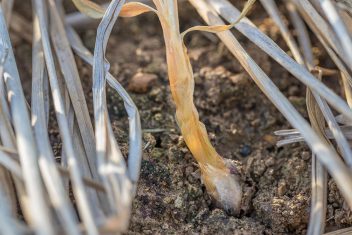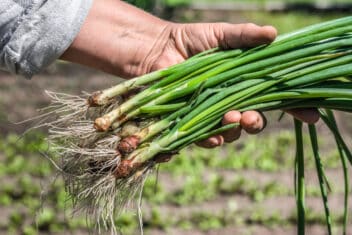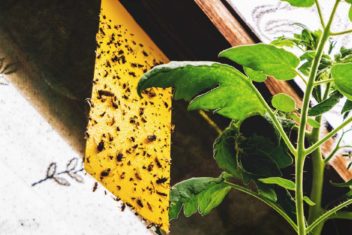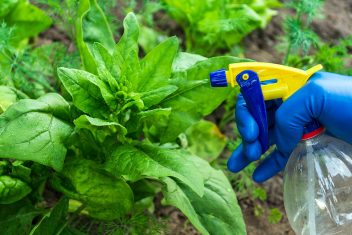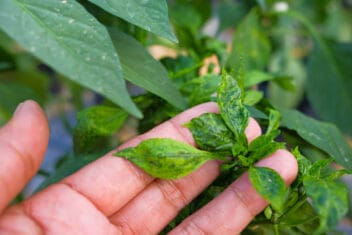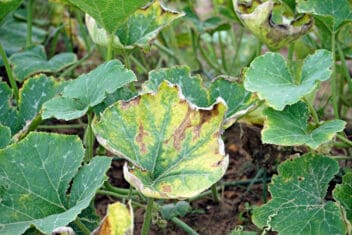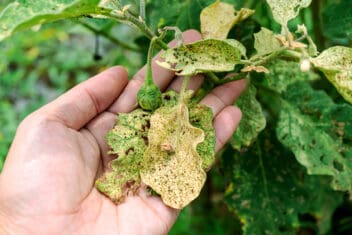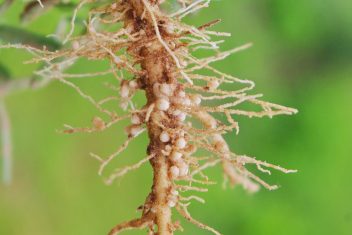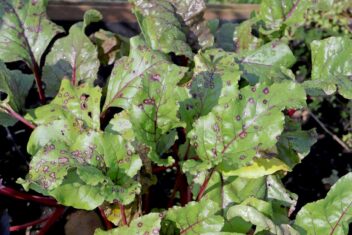Celery is a staple at grocery stores everywhere, but it rarely makes an appearance in our backyard gardens. Many gardeners don’t consider growing celery because they’ve heard it’s impossible to grow or that home-grown celery is flavorless. The rumors aren’t true. Growing celery has a few challenges and you might run into problems, but they can be avoided.
With a little patience, your garden can produce stalks with a fuller flavor than anything the grocery store can offer. Here are 13 problems you might run into and what to do about them.
How Challenging is Celery to Grow?
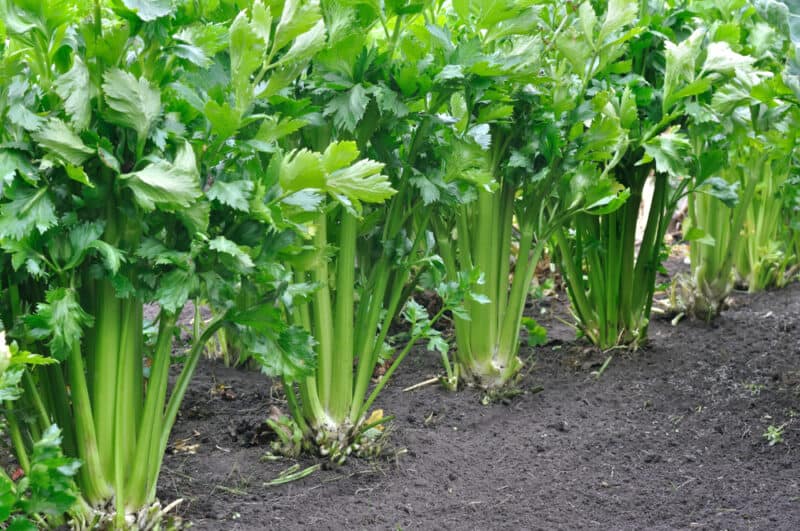
Celery is one of the most common vegetables in the supermarket. You can find celery at upscale grocery stores next to its cousin celeriac and across from 15 different varieties of mushrooms. But you can also find celery at the small-town corner store, next to a neglected bag of carrots and across from three varieties of potato chips.
Many home-gardeners have been turned off from experimenting with celery because of its slow germination, water needs, and inability to handle hot weather. But for all these challenges, celery is a fabulous plant to grow.
The taste of homegrown celery (Apium graveolens) is more intense than store-bought. Commercial growers tend to blanch their stalks slightly before shipping. That makes the stalks last longer, but it also reduces the flavor profile. Fresh from the garden celery makes fantastic stuffing and pairs well with chevre. Once you have the taste of homegrown celery, all the challenges of growing it will seem small.
For tips on growing celery, check out our comprehensive guide.
Germination
Celery seeds can take up to four weeks to germinate. If you’re starting seeds to plant in your own garden, plant seeds 10 weeks before the last anticipated frost of the season. In my house, the dark, cool weather of late January isn’t an easy time to start seeds.
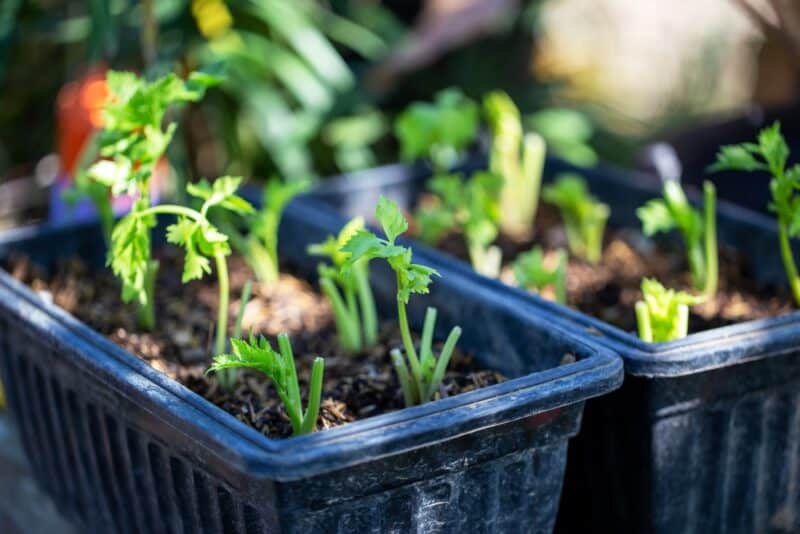
If you’d rather not fight the winter weather to start celery seeds, consider purchasing seedlings. It’s much easier to foray into celery growing for the first time without worrying about slow germination.
Moisture
Celery is a high moisture crop. Celery stalks are mostly made up of water, so of course, the plants need plenty of water while growing. Celery will not grow well without regular and plentiful irrigation. If you’re living in a place with regular droughts and water restrictions, you’re better off growing low-water plants instead of celery.
Cool Weather Crop
Celery plants need at least six hours of sunlight, but they can’t handle a lot of heat. In hot weather, your celery plants will need plenty of shade and cooling breezes as well. It can require a bit of a balancing act to give your celery plants the light they need, without overheating them.
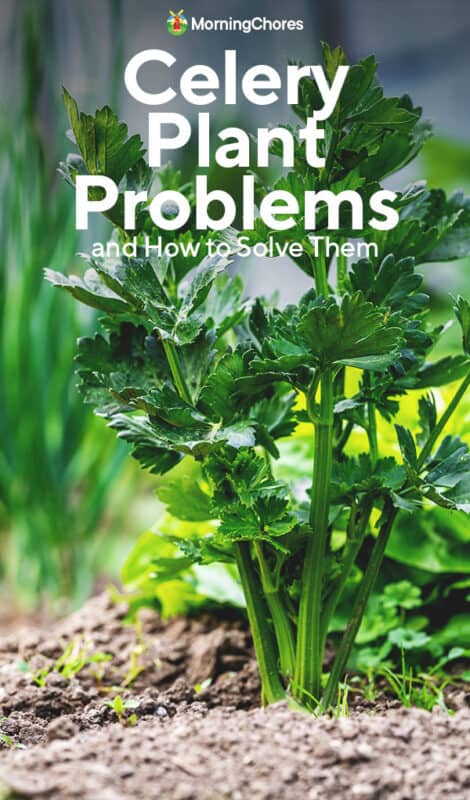
Problems You May Face While Growing Celery
Maybe you’ve jumped right into celery growing. Your garden is full of crisp little stalks all lined up in a row – but something’s not right. Celery has a few plant-specific problems that can crop up from time to time when you’re growing the stalks. Most of them are easy to fix if you catch them early in the growing season.
1. Thin Celery Stalks
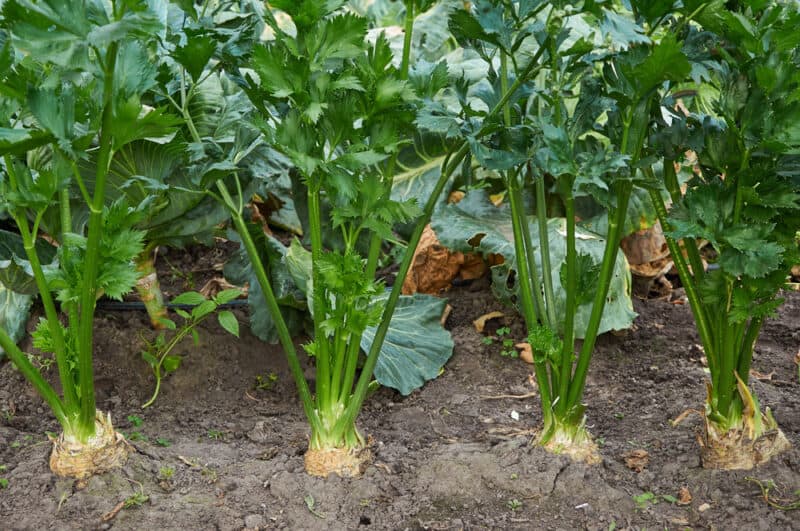
Skinny stalks are a huge disappointment. There are a number of reasons why your celery plants aren’t producing healthy, substantial stalks. The most common is harvesting before the stalks are fully mature. Celery requires a long growing season – generally between 130-140 days. If you harvest your stalks before they’re ready, they’ll be spindly and undergrown. Be patient!
Of course, if frosts are in the forecast, harvest anyway. It’s better to have skinny celery than no celery at all. Since celery is highly susceptible to frost, you should keep an eye on fall temperatures and harvest if you have to.
Lack of water, overheating, and insufficient nutrients are other reasons your celery plants may not be sending up strong stalks. Don’t skim on the essentials – celery grows best when it’s spoiled with all the attention.
2. Hollow Stalks
Hollow celery stalks are often tough and stringy. Instead of firm, crunchy stalks – there’s just a tough, hollow stick of fibrous plant. No one wants to gnaw on that!
Hollow stalks are one of the most common problems that people growing celery for the first time complain about. Most of the time, hollow stalks are caused by insufficient water or nutrients. Give your growing celery plants plenty of water – and remember that their shallow roots can’t reach deep into the earth to drink. If the top layer of the soil feels dry, your celery plants are probably thirsty.
Try using a compost tea weekly to provide both water and nutrients to your celery plants. Compost tea is a great way to boost nutrients consistently for plants like celery that require a steady diet to thrive. You can also try growing a hardier variety of celery, like ‘Conquistador,’ which can handle a bit more deprivation than most celeries.
3. Cracked Stems
If your celery plants have cracked, brittle stems they’re lacking in boron. Boron is a rarely considered nutrient that is absolutely necessary to healthy celery growth. Boron deficiency is primarily found in alkaline soils. Add in about two ounces of borax to 30 square yards of soil and mix well.
4. Tough, Bitter Stalks
You may have let your celery grow too long. It’s hard picking the right time to harvest, isn’t it? But leaving your celery too long is just as problematic as harvesting too early – maybe more so. Over-matured celery is tough, and its flavor is disappointing. Keep an eye on the calendar and don’t let your plants grow too long.
5. Bolting (Flowers Forming)
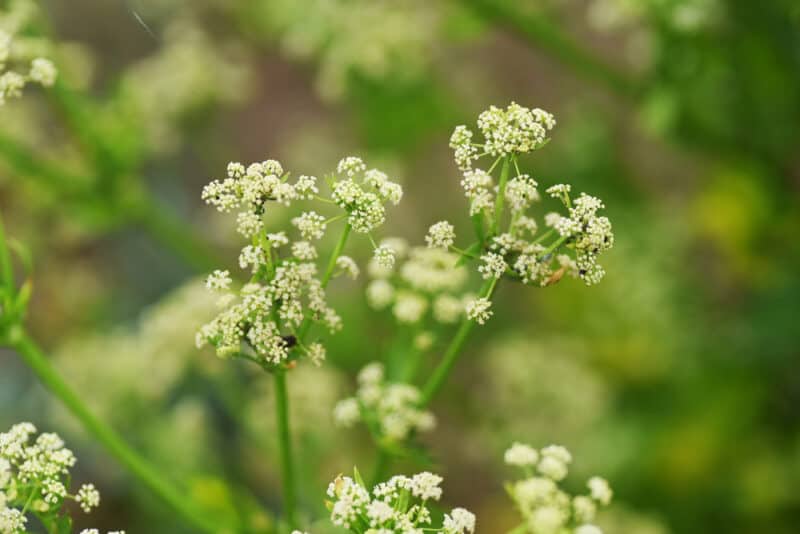
Celery hates the heat. When the plants experience too many long, hot, summer days they’ll bolt. Try to help your plants stay cool during heat waves by making sure they have plenty of afternoon shade. Try to plant your celery rows where they’ll be able to soak up the gentler, morning sun and chill in the afternoon shade.
If necessary, build screens to create a partially shady paradise for your tender plants.
6. All Leaves, No Stalks
This is one of the most disappointing celery growing problems for me. Short, bushy celery plants look so ridiculous.
This happens when there are a lot of temperature fluctuations during the early growing season. When the temperatures are all over the place, your plants don’t really know what to do, so they bush out instead of growing tall. Use horticulture cloth or cold frames to give them more consistent temperatures, and avoid planting too early.
7. Young Stalks and Leaves Turning Black
While it sounds like a pirate’s name, this is actually a calcium deficiency that causes the young stalks and leaves in the center of the plant to turn black. It’s usually caused by irregular watering, over-fertilization, or high soil salinity.
Remember that consistent moisture is the key to happy celery plants. Try to avoid letting the soil dry out. Consistent watering and taking a break from fertilizing should help your plants recover.
8. Angular Yellow Splotches

The devastating disease mosaic virus is one of the most common celery growing problems. It causes yellow patches to form on leaves and stalks, stunted growth, and eventually death. There is no cure for infected plants. All you can do is remove them from your garden as soon as possible to reduce the spread of the disease.
9. Yellow Spots and Brown Streaks
This fungal disease causes yellow spots that spread into long, brown streaks on the leaves. Celery early blight is primarily caused by excessive rain or overhead watering. Keep weeds down in the garden to avoid fungal spread and try to water only at the base of the plant.
10. Holes in the Stalks and Leaves
The celery worm is the larva of the beautiful, black swallowtail butterfly (Papillo polyxenes asterius). You can pick them off by hand or plant a few extra celery plants to sustain these brown and white caterpillars. They chew irregular holes in leaves and stems, but there are rarely more than a few in any garden.
Another caterpillar, the celery leaftier (Udea rubigalis) grows into a small brown moth. Like the celery worm, you can easily pick this little, green and white guy off your plants and kill him if you want to. Celery leaftier chew holes in the leaves and stalk, but rarely overwhelm an entire bed of celery. Chickens love caterpillars, so if you chose to kill this one, feed him to your flock.
11. Chlorotic Spots and Brown Lesions
This blight is caused by the Septoria apiicola fungus. It thrives in humid weather after a long rainy season. It causes chlorotic spots that turn into brown lesions.
This soil-borne fungus is difficult to fight once it starts. Try to keep it at bay by keeping your garden well weeded and improving soil drainage. An application of neem oil may also help keep blight at bay. After all, just because celery plants like moisture doesn’t mean it’s healthy for them to sit in standing water.
12. Scorched Leaf Tips or Margins
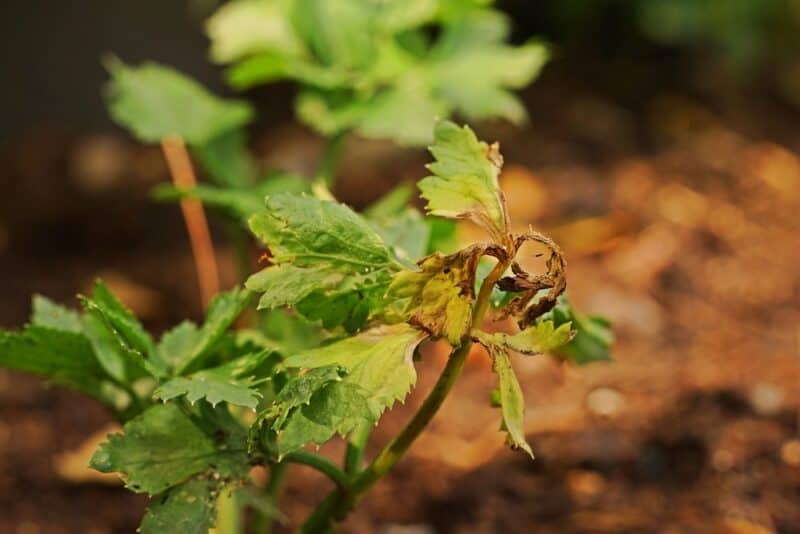
Magnesium deficiency can be common in overworked soil. Many of the nutrients that used to be present in the soil are wearing out.
If your celery plants are growing in magnesium-deficient soil, the leaf tips and margins will look scorched and streaky. Test your soil before adding additional magnesium, but if you find a deficiency, add magnesium chelates to balance it out.
13. Pink Fuzz at the Base
This fungal disease is another common issue for celery plants in areas with poor drainage. If your soil has been consistently saturated with water for over two weeks, watch out for pink rot. The base of the stalk will start developing brownish lesions with pink margins. The lesions spread up the stalk until the whole plant collapses in a mushy heap.
Pink rot is caused by Sclerotinia sclerotiotum fungi which can live in the soil for years. If you think pink rot may be lingering in your soil, solarize it before planting, water judiciously, and maintain good drainage throughout your celery bed.

